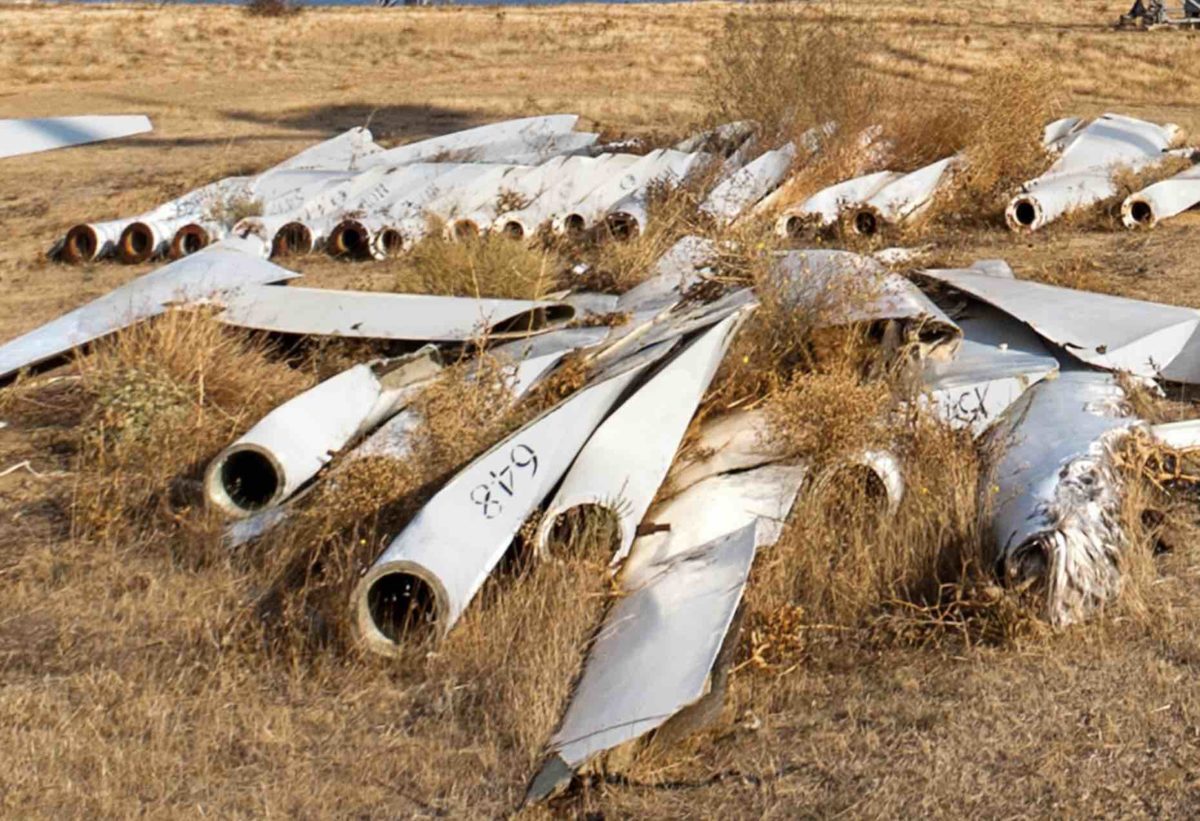With carbon fibre set to rival single-use plastic as this decade’s waste problem du jour, researchers are racing to find new ways to recycle the composites, used in wind turbine blades and other industries, that do not break the bank.
Two scientists from the University of Sydney have designed and tested a process they say delivers a material that retains up to 90 per cent of the original’s strength while reducing the amount of energy required.
“This is a huge opportunity,” said Dr Yaning Wei. “And not only because various modes of recycling are cost-effective and minimally impactful on the environment.”
“In an era of mounting supply chain disruptions, local recycled products can provide a more immediate product when compared to imports and create a burgeoning advanced manufacturing industry.”
The technique devised by Wei and his PhD advisor Dr Ali Hadigheh, published in the journal Composites Part B, Engineering, adds an extra stage to the thermal process of breaking down the material but in doing so improves the final material and costs less to do.
They dipped carbon fibre from aeroplane scrap and a bicycle into acetic acid and brought the temperature up to 100 ◦C in an initial “pre-treatment” stage.
Then they started the usual carbon fibre recycling process.
But, thanks to the pre-treatment, at markedly reduced temperatures: the pyrolysis stage, a process that heats without oxygen, only needed to go up to 425◦C as opposed to 500◦C-600◦C, and the following oxidation stage only had to go up to 550◦C. Normally the process needs temperatures between 500◦C-750◦C.
“Our kinetic analysis revealed that pre-treated carbon and glass fibre composites (CFRP) undergoes an additional reaction stage, enabling enhanced breakdown at lower temperatures compared to untreated CFRP,” said Hadigheh.
Not only did pre-treatment in acetic acid break down more of the material, but it also reduced the amount of heat — and therefore energy — needed in later stages, he said.
Aware of the reputational risk
Carbon and glass fibre composites are one of the most popular new materials available today, used in everything from wind turbine blades to hydrogen tanks, aeroplanes, yachts, construction, and car manufacturing.
The waste from this difficult-to-recycle material is forecast to hit 840,300 tonnes by 2050.
In the clean energy sector, wind turbine blades have proven difficult to recycle due to the chemical properties of epoxy resin – a substance virtually relied upon across the industry as a binder for carbon fibre reinforcement due to its light weight and resistance to fatigue.
The difficulty of removing enough of the resin without wrecking the carbon fibres means it’s usually just dumped.
In Australia alone some 15,000 tonnes of blades are expected to be retired by 2034, and efforts are being made to avoid them being sent to rubbish dumps .
“While awareness of everyday consumer recycling is increasing and plastic waste is in the spotlight, Australia must urgently consider wide-scale recycling of new generation construction materials before they mount up as another waste problem and are put into the ‘too hard basket’,” Wei said.
CFRP is not biodegradable and can harm the environment if it’s just dumped in landfill.
In a previous paper, Dr Hadigheh’s team found that solvolysis – a method where materials are broken down by applying a solvent under a specific pressure and temperature – could reclaim carbon fibre while delivering a high net profit, and reduce CO2 emissions.
But they are not the only ones.
American scientists are looking at compostable mycelium-based turbine blades with a prototype already built and ready to be tested.
At the less viable end of the research spectrum is an idea published by Danish scientists who are using a similar technique to that proposed by Wei and Hadigheh, but using the ultra- rare, and very expensive, metal ruthenium as the solvent in a process that takes several days.
Wind turbine blade makers are aware of the reputational risk of being caught napping on this issue and have been working on recyclable blades for some years.
Vestas unveiled its design this year, GE came out last year with its prototype, and Siemens Gamesa’s RecycleableBlade launched in 2021 before hitting onshore then offshore farms in the following two years.
Denmark-based company Continuum says it plans to build six industrial-scale wind turbine blade recycling factories across Europe, with plans to begin taking end-of-life blades by the end of 2023.







